How do you know when someone uses Arch Linux? They will tell you. Welcome to an article telling you about how I use Arch Linux, well sort of anyway. It's a running joke in the Linux community and now one I am very much a part of.
Over the many years I've used Linux since discovering it properly about 17 years ago, I've seen many distributions rise and fall. With that in mind, I've obviously used quite a lot of different distributions. Like many people, early on in my Linux life I was a "distro hopper", someone who can't sit still and has to keep trying everything out. Moving between the likes of Mandrake (before it was Mandriva), Fedora Core (the original Fedora name), openSUSE and eventually feeling quite at home when discovering Ubuntu.
A long time later, i wanted to be a bit more bleeding-edge and have all the latest bells and whistles so I settled on Antergos. It was based upon Arch Linux but gave you a nice installer, which eventually died like many distributions before it. Manjaro was an option too, which I used for a while (two times, years apart) but I found it to be too unstable for my liking due to the way they bundle updates, and they've made a lot of…odd decisions lately that I felt pushed me away from them.
So what to do? I felt a bit stuck. Ubuntu was too safe, not particularly exciting and I didn't want another normal distro. I was told some tales of EndeavourOS, a fresh distribution that is the successor to Antergos. Giving an easy to use installer, with plenty of desktop environments to pick and unlike Manjaro, they are right up close to Arch Linux on the packaging with EndeavourOS sticking to Arch upstream but they have a few of their own extras. This was exactly what I wanted, Arch Linux but easy to install and get going.
Pictured above - EndeavourOS plus the MATE desktop. It's not fancy, and the MATE desktop isn't full of bling but that's why I like it. For the most part: it stays out of my way, it's highly configurable when I want it to be and it's easy to use.
Here's the thing. EndeavourOS is absolutely not something I will recommend to new users, or to even reasonably confident Linux users because for most I still recommend other distributions talked about in this previous article. Why? You really do have to setup a lot yourself, sometimes annoyingly so and there are problems at times with Arch being so fresh with packages.
The most annoying issue so far was a bug in the Arch packaging of libcairo, which caused the demo of APICO and all Paradox Interactive titles that used their launcher to fail to launch from Steam with the normal Steam Linux Runtime. The issues were reported (#1 - #2), then to the libcairo developers too (here) and in less than 24 hours the fix was committed. Part of why I love open source and Linux so much at times, because finding issues is often nothing more than running something in terminal to see and then you can go and report it and help get it fixed. Issues like that are why I never suggest people go and use the likes of Arch Linux (or anything based on it) since the updates continually roll in and breakages can and will happen but you find them before other distributions do so it all balances out.
That said, EndeavourOS has actually been great. Surprisingly so too. It's now my /home on Linux and I continue to learn more about Linux every day when going a little out of my usual comfort zone with it.
If you're after something that's constantly up to date but easy to setup and you know what you're doing, EndeavourOS is the tip of the day.
Certainly, Mint's biggest problem is the lack of an upgrade path. You basically have to re-install every two years, simple as that. Hardly ideal. But otherwise, it's amazing. So why am I constantly on the lookout for another distro...?
Oh? The upgrade path typically "opens" shortly after new releases, and they appear as a menu item in the update manager. The update manager does not, however, alert you about this; I believe that's intentional as the Mint camp typically, as well as any sane person would, tell a person not to do a major upgrade unless they had an actual reason to. It's fair to say I probably only knew about this because I subscribe to their rss feed on their homepage, and when they announce new releases, they also announce upgrade instructions typically; I doubt I'd be aware of the details otherwise. It's a few clicks to do and is pretty similar to just doing a normal update. All that being the case, if you don't mind doing new installs, keep doing them IMHO. Any OS, Windows and OSX included, tends to appreciate a fresh start once in a while. I've used the upgrade method for the last few major versions.
That said, for a long, long, time I've only made two data partitions for my installs -- home, and everything else, so if/when I ever need to do the nuclear option and actually reinstall it takes maybe twenty minutes combined; including picking out whatever software selection post install. Pretty much all my settings/icons/themes are in my home directory anyway, so even a fresh install takes very little time -- but I still haven't had to in a long time now. Not to make this about Windows, but honestly, whenever I have to do a full windows install it tends to be an all day affair in comparison; I'm not sure when it happened, but I tell ya, setting up Linux sure became far easier then windows at some point.
That's really interesting. I only use about 3 or 4 PPAs (Mesa, Wine, Chrome/Dropbox and OBS), but I've found the Mint upgrade to be a real train wreck. It refused to upgrade unless I downgraded all my packages first, which took ages. Then finally upgraded, then I had to restore all my PPAs, and so on. It was painful stuff. To be fair, Ubuntu isn't hugely better - but it automates a lot of the process for you.
But just look at these instructions... holy cow. https://community.linuxmint.com/tutorial/view/2
Ubuntu was too safe, not particularly exciting and I didn't want another normal distro
Isn't this weird? I can really relate to it, but I don't really understand what drives it. It's the fundamental force behind distro-hopping I think.
I'm mostly settled on Mint, but there's still an itch that there might be something better out there. Certainly, Mint's biggest problem is the lack of an upgrade path. You basically have to re-install every two years, simple as that. Hardly ideal. But otherwise, it's amazing. So why am I constantly on the lookout for another distro...?
I think it's also that after having distro hoped a little, you find that no distro fits 100% of what you want. After a bit more than 15 years hoping around, I have settled on Fedora for the base... But use half a dozen VMs, guess that's the final stage of hoping. It is actually quite a nice way to use your computer, but needs quite a bit of RAM. Right now I personnaly have a virtual Fedora Silverblue - mostly to try, it is very fun btw -, Centos stream (for all these crap which require 10 years old packets but still have not completely outdated experience) and deepin (because... because ?)running in parallel ... + My Fedora host of course (used for steam and co directly)
I tried EndeavourOS, and it's too close to vanilla Arch for me (I don't like spending a long time to install packages);Not arguing your preferences here, but how are the Manjaro updates faster than Arch? I use both systems and I always use the same `sudo pacman -Syu` for each. I think Manjaro has fewer mirrors too. Maybe you mean the frequency of updates? That is completely controlled by the user. Just not sure what would be slower.
EDIT: Oh, I think I understand now that you mean the default packages that come with Manjaro versus vanilla Arch where you have to find them all and install them yourself... so the getting-up-and-running aspect of installing the system, not maintenance like I was thinking.
Last edited by 14 on 6 Jan 2021 at 7:17 pm UTC
I installed Pop at the end of last week and have been beavering away at making it more comfortable for me. Before I installed it, I spent some time with Manjaro and Mint, both XFCE (really, my favourite desktop) and even less time with Endeavour and KDE Neon. All had pluses and minuses, but Pop had a certain panache that really got to me --- surprising, really, given my preference for XFCE.
I like that Pop has kernel 5.8, and that Steam and Nvidia integration are solid. Best of all, though, Pop made it possible for me to install XFCE's superior clipboard manager, (clipman) and notes plug-in into my non-XFCE desktop. I actually left Ubuntu Mate behind because I couldn't live without zen-like clipman.

Last edited by Nanobang on 7 Jan 2021 at 1:30 pm UTC
My current good old Debian 9 base is showing its' age. Many programs work fine and I even have a bleeding edge kernel, Mesa and Wine however there are a few odd cases where a software refuses to compile from source.
I'll probably try an Arch based setup on my laptop.
For me openSuse TW is fresh enough that I'm running the latest packages pretty fast, bit not so new that I get the obvious bugs. I'd date say I think it updates a little faster than Debian testing, or already feel that way.
I also like it because it is mature. The defaults make sense and most things work out of the box. In the 2 years I've run OpenSuse TW, I think I've only had 1 breakage and on top of that they've anticipated that possibilty and mitigated it with a snapshot system to roll back the system in case of a bad update.
I think I'm going to stay on this one for a little while
Waiting for Debian 11 this year, I use this distro as my main OS as it's easy to create an offline repo and it's rock solid (got a bunch of offline systems all over the house so its handy).
My current good old Debian 9 base is showing its' age. Many programs work fine and I even have a bleeding edge kernel, Mesa and Wine however there are a few odd cases where a software refuses to compile from source.
Amen! Been using Debian on my main machine since the 90s!
You should really upgrade to buster (Debian 10) though...
Last edited by seamoose on 7 Jan 2021 at 4:02 am UTC
I tried EndeavourOS, and it's too close to vanilla Arch for me (I don't like spending a long time to install packages); I prefer the so-called "bloated" Manjaro. All the benefits of Arch with the ease of Ubuntu.
That was also my experience with EndeavourOS. When I installed it, I realised all the stuff that Manjaro does right out-from-the-box, and didn't want to spend time "copying" this behaviour in EndeavourOS.
After finally trying EndeavourOS this year, though, I can say that it's currently one of my favourite Linux distributions for advanced users (along with Fedora).
I use it with Xfce as desktop environment, and generally I'm very happy. The only problem is HiDPI support. To the credit of Xfce team it got a lot better this year, but it's still not as seamless as in GNOME: there are some things you have to tweak yourself.
Haven't looked back. Endeavour has been excellent. Solid as a rock, stable AF, and very configurable.
Using the default XFCE edition, and I love it.
Gotta thank the Manjaro Devs for being complete asshats, because I wouldn't have tried Endeavour otherwise!
....since the Manjaro Devs decided to go off the deep end and destroy their community...I am curious what you mean by that? I use Manjaro as my daily driver for over 3 years now and try to stay up-to-date with what happens in Manjaro space, but cannot think of something that would justify such harsh words. Would you mind to elaborate?
...
Gotta thank the Manjaro Devs for being complete asshats, because I wouldn't have tried Endeavour otherwise!
I really liked and used Antergos a long time. I would really like to use EndeavorOS as successor but unfortunately they replaced the installer of Antergos with Calamares. But Calamares offers no option to encrypt your hard drive in combination with an unencrypted boot. The only two distributions which offer this are Ubuntu and Fedora. So I will stick with them.It's possible in openSUSE, too (with custom partitioning). And Tumbleweed is a really great choice if you are looking for a quite up-to-date but still rock-solid rolling release....
As for EndeavorOS - never heard of itSo the article is greatly appreciated, I'll have a look at it at some point!
Sounds like I have to tinker with Tumbleweed again :)
Eventually I also needed a new home because of some of the stuff that happened at Manjaro.
I didn't wanted a normal distro and I liked arch so EndeavourOS it was!
I definitely needed to adjust my arch install script a lot. Manjaro come with a lot of stuff by default that I needed and liked and wasn't in the base Arch+Cinnamon package.
But, after many test runs in VirtualBox and adjusting my install script, my system is now always quickly up and running with all the packages I need, program settings are restored and the same goes for my Cinnamon settings and my system is basically almost the same as it was in Manjaro!
Ummm, you and the author (Liam) both mentioned things happening recently with Manjaro. I've been running Manjaro-KDE for several years on a couple of workstations, and I'm not aware of anything going on... What's been happening?
Last edited by inlinuxdude on 7 Jan 2021 at 3:48 pm UTC
That's really interesting. I only use about 3 or 4 PPAs (Mesa, Wine, Chrome/Dropbox and OBS), but I've found the Mint upgrade to be a real train wreck. It refused to upgrade unless I downgraded all my packages first, which took ages. Then finally upgraded, then I had to restore all my PPAs, and so on. It was painful stuff. To be fair, Ubuntu isn't hugely better - but it automates a lot of the process for you.
But just look at these instructions... holy cow. https://community.linuxmint.com/tutorial/view/2
You're not kidding about holy cow there, wow. Looks extremely verbose, and almost all of it seems to be about taking backups and such. That's also...not quite the right instructions, they should probably be more clear about that...
[https://linuxmint-user-guide.readthedocs.io/en/latest/upgrade-to-mint-20.html](https://linuxmint-user-guide.readthedocs.io/en/latest/upgrade-to-mint-20.html)
I guess I was wrong about it being in upgrade manager, could've sworn it was. Uses the "mintupgrade" tool. I've taken backups like the doc suggests, but I've never bothered to downgrade any PPAs or anything; but then I don't use any PPAs that would interfere with system packages to begin with (that's "looking for trouble"). I will say this though, if you use any PPAs for newer graphics drivers it would be wise to downgrade and remove _that_ PPA in advance.
That's really interesting. I only use about 3 or 4 PPAs (Mesa, Wine, Chrome/Dropbox and OBS), but I've found the Mint upgrade to be a real train wreck. It refused to upgrade unless I downgraded all my packages first, which took ages. Then finally upgraded, then I had to restore all my PPAs, and so on. It was painful stuff. To be fair, Ubuntu isn't hugely better - but it automates a lot of the process for you.
But just look at these instructions... holy cow. https://community.linuxmint.com/tutorial/view/2
You're not kidding about holy cow there, wow. Looks extremely verbose, and almost all of it seems to be about taking backups and such. That's also...not quite the right instructions, they should probably be more clear about that...
[https://linuxmint-user-guide.readthedocs.io/en/latest/upgrade-to-mint-20.html](https://linuxmint-user-guide.readthedocs.io/en/latest/upgrade-to-mint-20.html)
I guess I was wrong about it being in upgrade manager, could've sworn it was. Uses the "mintupgrade" tool. I've taken backups like the doc suggests, but I've never bothered to downgrade any PPAs or anything; but then I don't use any PPAs that would interfere with system packages to begin with (that's "looking for trouble"). I will say this though, if you use any PPAs for newer graphics drivers it would be wise to downgrade and remove _that_ PPA in advance.
The instructions do look scary, but even my wife had no trouble using the upgrade tool, and she's no power user. But I did help her find good sources for her graphics software afterwards.
Personally I use every upgrade as an opportunity to do some system maintenance and clearing of inevitable cruft. An hour every couple of years is hardly a lot of effort.
Waiting for Debian 11 this year, I use this distro as my main OS as it's easy to create an offline repo and it's rock solid (got a bunch of offline systems all over the house so its handy).
My current good old Debian 9 base is showing its' age. Many programs work fine and I even have a bleeding edge kernel, Mesa and Wine however there are a few odd cases where a software refuses to compile from source.
I'll probably try an Arch based setup on my laptop.
Debian user too, but i'm on the "almost-rolling" side. I do use stable (buster) almost everywhere : laptop, server except on my main desktop where i have decided i can lose a bit of time on upkeep with a debian sid (unstable). Despite unstable is said unstable… it is very stable from my point of view, it's not really a rolling but it's not as "outdated"
What i do really like in debian sid, is that i don't have this kind of big update which change too much things in the system and cause potential lots of issues at the same time, on debian sid, it's look to me that the system don't change much after each update, it's less stressful.
Eventually I also needed a new home because of some of the stuff that happened at Manjaro.
I didn't wanted a normal distro and I liked arch so EndeavourOS it was!
I definitely needed to adjust my arch install script a lot. Manjaro come with a lot of stuff by default that I needed and liked and wasn't in the base Arch+Cinnamon package.
But, after many test runs in VirtualBox and adjusting my install script, my system is now always quickly up and running with all the packages I need, program settings are restored and the same goes for my Cinnamon settings and my system is basically almost the same as it was in Manjaro!
Ummm, you and the author (Liam) both mentioned things happening recently with Manjaro. I've been running Manjaro-KDE for several years on a couple of workstations, and I'm not aware of anything going on... What's been happening?
I remember a page that described many of Manjaro's issues, but right now I can only find this one: https://github.com/vizs/manjarno
I ignored most of it when I found out, nobody is perfect and we all make mistakes, but at some point, I can't make any more excuses.
For me, the reason was how the donated funds was used for personal stuff. There was a discussion on the forums (the old one, thread doesn't exist anymore, how convenient) started by a staff member to discuss it, but the project lead hid the thread from public eyes. Delisted it. So nobody could find the thread unless they had a direct link.
Ah, found the reddit thread that brought it all to light! https://old.reddit.com/r/linux/comments/hwoev3/change_of_treasurer_for_manjaro_community_funds/
And here is the thread that started it all on the Manjaro forums: https://web.archive.org/web/20200807042341/https://forum.manjaro.org/t/change-of-treasurer-for-manjaro-community-funds/154888
Last edited by Sojiro84 on 7 Jan 2021 at 9:12 pm UTC
What i do really like in debian sid, is that i don't have this kind of big update which change too much things in the system and cause potential lots of issues at the same time, on debian sid, it's look to me that the system don't change much after each update, it's less stressful.
I agree with you, but more when I think of Debian testing. It's like that perfect middle between sid and stable. I used it for a very long time.
I might like Opensuse TW as my daily driver, but my little file server is running debian stable 10 years non stop.
I think what scares me away from arch is the fear of unexpected breakage and maintenance. I love to tinker with the systems, but sometimes I just want to play a game and when it suddenly breaks, that can be really frustrating. It sounds like ebdeavoros might be a good way to try it out.
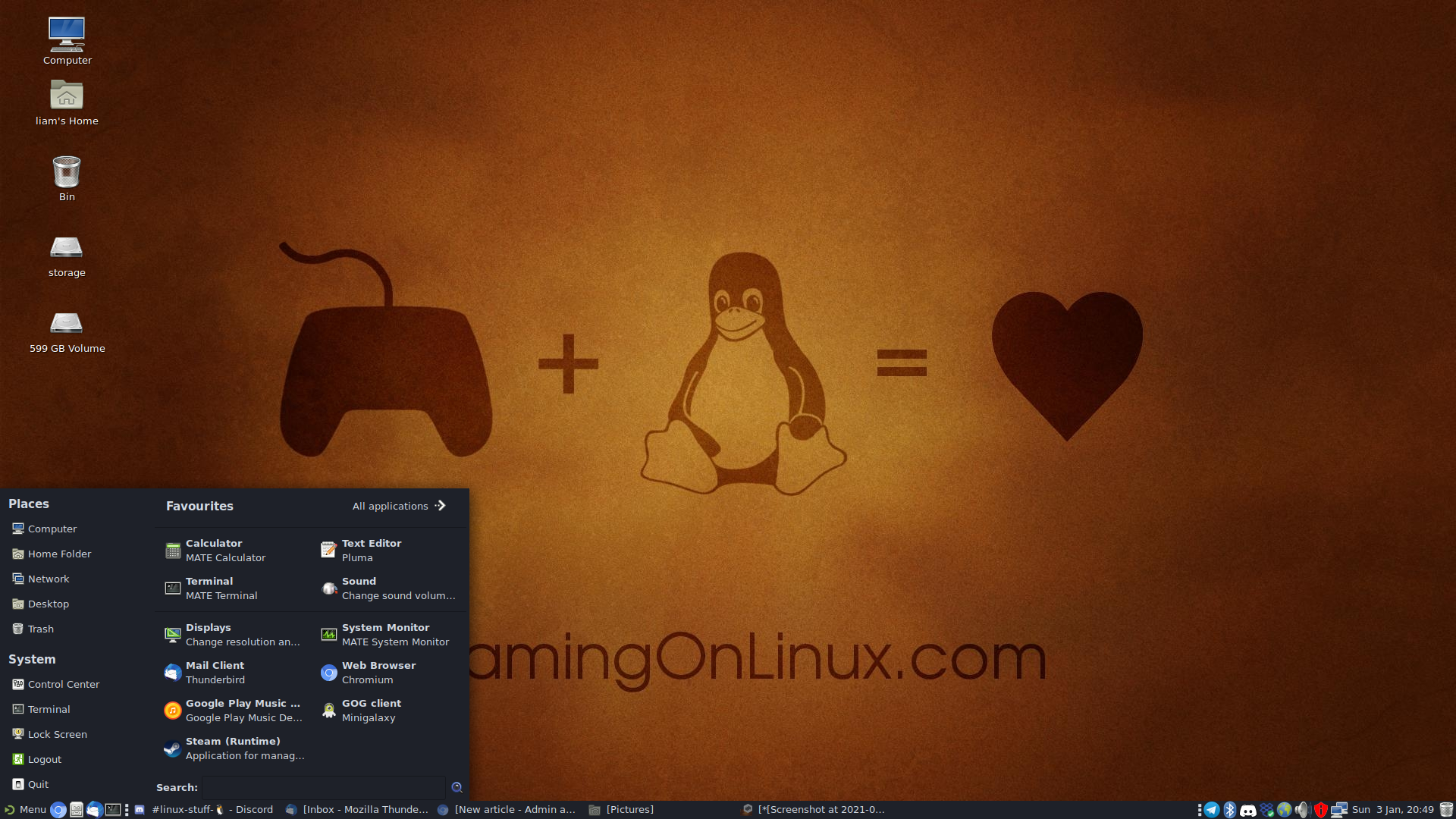
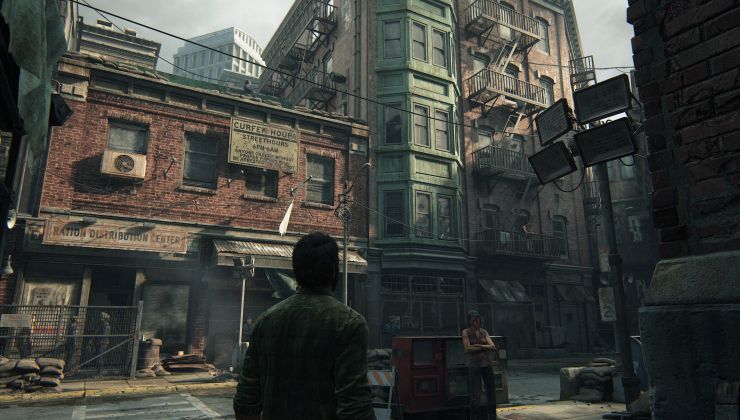
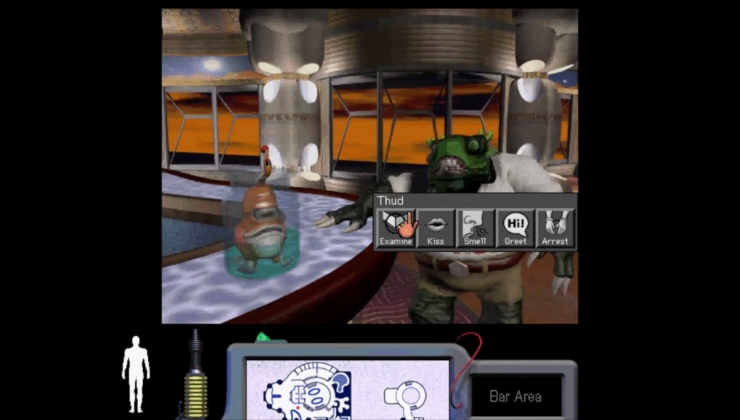
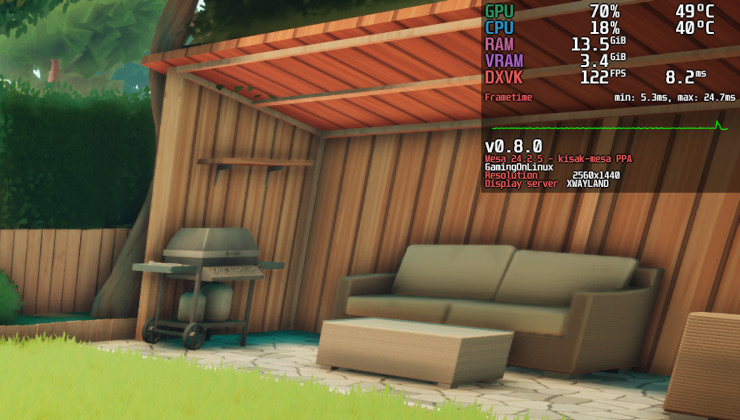
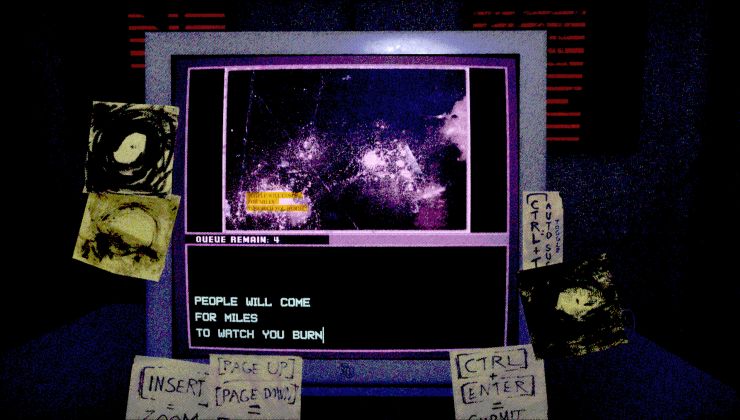










 How to set, change and reset your SteamOS / Steam Deck desktop sudo password
How to set, change and reset your SteamOS / Steam Deck desktop sudo password How to set up Decky Loader on Steam Deck / SteamOS for easy plugins
How to set up Decky Loader on Steam Deck / SteamOS for easy plugins
See more from me